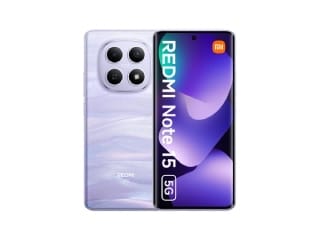- Home
- Wearables
- Wearables News
- This Virtual Reality Device Lets People Feel the Sensation of Water Touching Their Lips in Metaverse
This Virtual Reality Device Lets People Feel the Sensation of Water Touching Their Lips in Metaverse
The researchers say the system allows users to feel the virtual world on and in their mouths – without actually making physical contact.

Photo Credit: Carnegie Mellon University
CMU researchers exploited sensitivity of lips to devise a new tactile feedback system
Imagine you are in a virtual reality (VR) environment beside a drinking fountain and want to drink water from it. While you could lean and drink water, you were unlikely to feel anything. That is set to change. Researchers at a private institution in the US have found a way that allows people to feel the sensation of the water touching their lips in the so-called Metaverse. Simply put, it means users of their device can now feel even kissing sensations, among many others. Lips are surprisingly sensitive. The researchers exploited this characteristic to let people receive tactile feedback in virtual worlds.
The researchers say that their device will make the Metaverse experience more immersive. The engineers at the Carnegie Mellon University in Pittsburgh say their new ultrasound-based system allows users to feel the virtual world on and in their mouths – without actually making physical contact.
The development is surprising. Their technology creates sensations on the lips, teeth, and tongue using airborne ultrasonic waves, and it's small and light enough to attach to the bottom of virtual reality (VR) goggles.
The researchers have also used the system to create such haptic effects as raindrops, mud splatter and crawling bugs. The researchers explained on the university's website that the effect is achieved by using multiple ultrasound-generating modules, or transducers. The device uses 64 tiny transducers.
However, not all effects that the device created were equally useful. The researchers said that those that were mouth-specific — such as brushing teeth, feeling raindrops from an open window or feeling a bug moving across the lips — were most successful. Others, such as the feel of walking through cobwebs, proved less powerful as people expected to feel those sensations over a large part of the body.
Even drinking from a water fountain could be a little disorienting, said Vivian Shen, a second-year Ph.D. student in the Robotics Institute and one of the developers of the system. “It's weird because you feel the water but it's not wet,” she said.
Catch the latest from the Consumer Electronics Show on Gadgets 360, at our CES 2026 hub.
Related Stories
- Samsung Galaxy Unpacked 2025
- ChatGPT
- Redmi Note 14 Pro+
- iPhone 16
- Apple Vision Pro
- Oneplus 12
- OnePlus Nord CE 3 Lite 5G
- iPhone 13
- Xiaomi 14 Pro
- Oppo Find N3
- Tecno Spark Go (2023)
- Realme V30
- Best Phones Under 25000
- Samsung Galaxy S24 Series
- Cryptocurrency
- iQoo 12
- Samsung Galaxy S24 Ultra
- Giottus
- Samsung Galaxy Z Flip 5
- Apple 'Scary Fast'
- Housefull 5
- GoPro Hero 12 Black Review
- Invincible Season 2
- JioGlass
- HD Ready TV
- Laptop Under 50000
- Smartwatch Under 10000
- Latest Mobile Phones
- Compare Phones
- Samsung Galaxy A07 5G
- Vivo Y500i
- OnePlus Turbo 6V
- OnePlus Turbo 6
- Itel Zeno 20 Max
- OPPO Reno 15 Pro Mini 5G
- Poco M8 Pro 5G
- Motorola Signature
- Lenovo Yoga Slim 7x (2025)
- Lenovo Yoga Slim 7a
- Realme Pad 3
- OPPO Pad Air 5
- Garmin Quatix 8 Pro
- NoiseFit Pro 6R
- Haier H5E Series
- Acerpure Nitro Z Series 100-inch QLED TV
- Asus ROG Ally
- Nintendo Switch Lite
- Haier 1.6 Ton 5 Star Inverter Split AC (HSU19G-MZAID5BN-INV)
- Haier 1.6 Ton 5 Star Inverter Split AC (HSU19G-MZAIM5BN-INV)

















